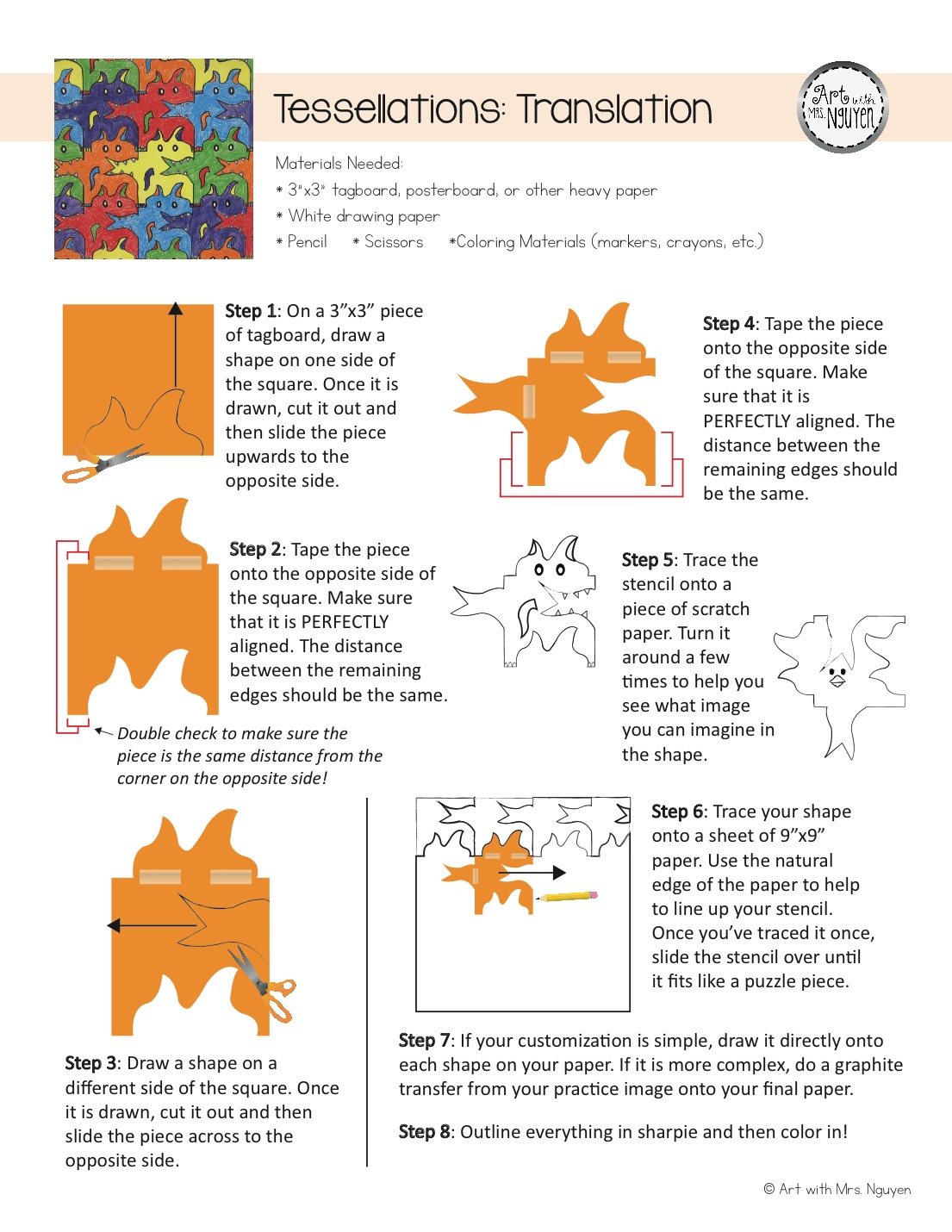

Is your altered shape symmetric? What type of symmetry does it have?ĭoes the new shape have to be symmetric to tessellate?
Have the students trace their new shapes several times onto blank sheets of paper to see if the altered shape tessellates. Will your new shape tessellate? Try it and see. Attach the cut out piece to the opposite side of the square with cellotape. Ask them to cut a piece out of one side of the square. Give each student a square cardboard tile. Look at the tessellating shape and predict how it was altered. Which of the regular tessellations does it look like it has been made from?Ĭan you see how this tessellation has been made? Show us. What can you tell me about this tessellation? Show the students the altered square tessellation ( Copymaster 1). We begin our exploration of tessellating art by altering squares and parallelograms. Te reo Māori vocabulary terms such as rōpinepine (tessellate, tessellation), neke (translate, translation), huri (rotate, rotation), whakaata (reflect, reflection), and hangarite (symmetry, symmetrical) could be introduced in this unit and used throughout other mathematical learning. Once they are fired or dried they can be painted in traditional Maori patterns that reflect transformation. Mosaic tiles can be created from fired clay, or cobblestones created from concrete or mud bricks. Tessellation might fit well with efforts to beautify the school environment. For example, tessellations are prominent in Islamic art traditions, in tapa cloth designs from Pacific nations, and in Māori tukutuku panel designs. The contexts for this unit can be adapted to suit the interests, experiences, and cultural backgrounds of your students. Motivate students to add new, undiscovered tessellations to the class display. displaying the work of students as models for others, especially students who provide explanations about why particular tessellations work. Rectangles altered by translation are much easier than alteration by rotation with triangles and hexagons restricting the set of shapes and the complexity of the transformations at first. The difficulty of tasks can be varied in many ways including: Share ideas with the whole class regularly. encouraging students to work collaboratively (mahi tahi) in partnerships, and to share and justify their ideas. discussing the properties of a shape that stay unchanged as it is translated, reflected and rotated. modelling examples of altering ‘parent polygons’ and the way in which the new shape is moved to form a tessellation. providing physical and digital manipulatives so students can experiment with the transformations. Students can be supported through the learning opportunities in this unit by differentiating the nature and complexity of the tasks, and by adapting the context to suit the interests, experiences, and cultural backgrounds of your students. It might be useful to have done Measuring Angles, Level 3 before attempting this unit. Other units that refer to tessellating are Keeping in Shape, Level 3 and Fitness, Level 4. Hence they will see how mathematics, art and even nature interact. You can easily find one by entering his name in your search engine.īy emulating Escher and exploring tessellations in this unit, the students will gain a greater appreciation of the way that tessellations work. There are many web-sites that explore the life and work of M.C. 
With regard to tessellations, Escher took a tessellation and, by adding and subtracting from the basic unit of the tessellation, turned it into a repeated picture. As you follow the men around and up their particular flights, you realise that they are going round and round. A typical impossible situation shows four men climbing stairs. One of these involves impossible situations and the other is his variation on the theme of tessellations. Used by permission.Įscher is famous for two types of engravings. Escher works (C) Cordon Art, Baarn, the Netherlands.

He studied at the School of Architecture and Decorative Arts in Haarlem but soon gave up architecture in favour of graphic arts at the age of 21.Īll M. Escher was born in Leeuwarden, Netherlands on June 17th, 1898. This unit is built around the famous artist Maurits Cornelius Escher.







 0 kommentar(er)
0 kommentar(er)
